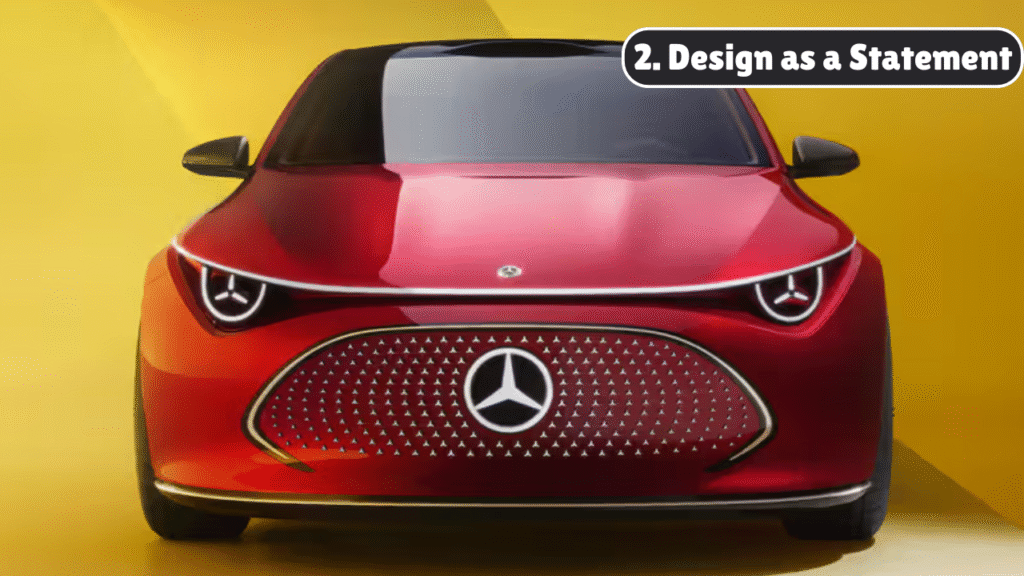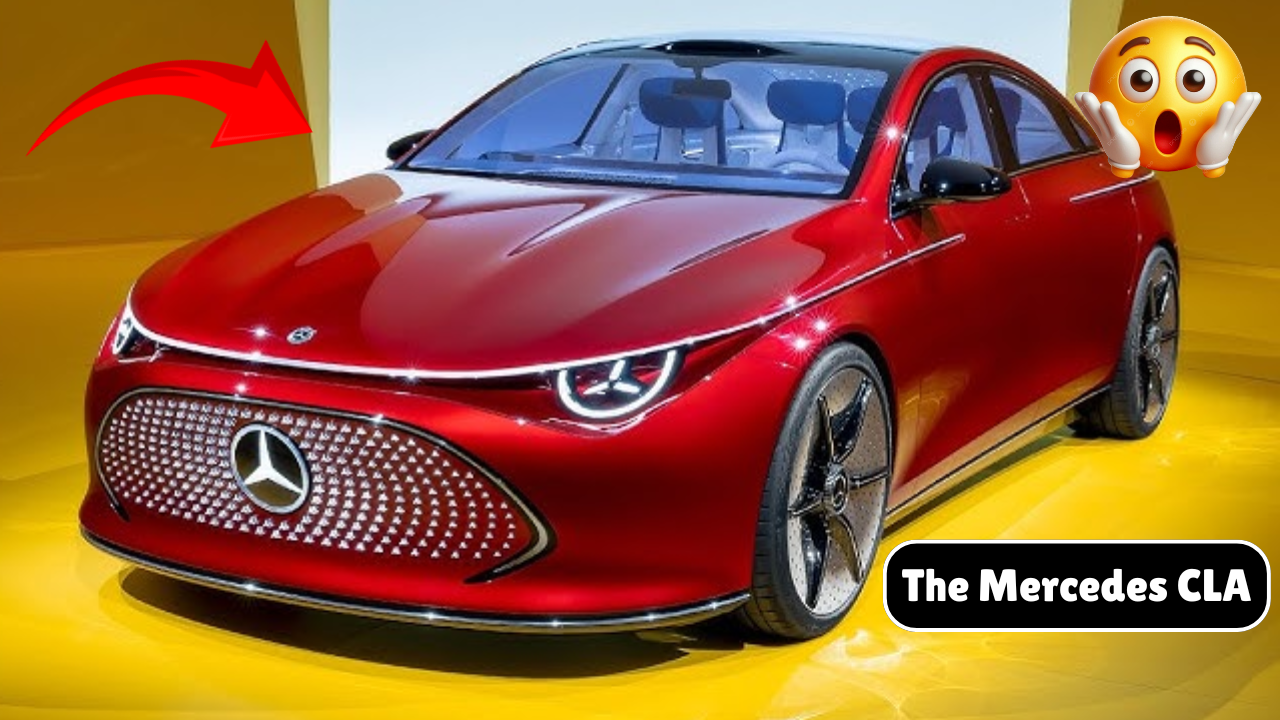Introduction
When Mercedes-Benz introduced the CLA in 2013, it was a bold move. Traditionally associated with opulent sedans and upper-echelon vehicles, the German automaker took a risk by diving into the compact luxury market with a swooping four-door coupe. At first glance, the CLA seemed like an entry-level teaser to the more sophisticated Mercedes lineup. However, with over a decade under its belt and new iterations rolling out, the CLA is proving to be much more than a stepping stone—it’s a bellwether of Mercedes’ evolving identity.
This article explores what the Mercedes CLA reveals about the brand’s current and future direction. We’ll trace its development, analyze its influence on the market and brand perception, and discuss what it means for Mercedes-Benz’s global strategy.
1. The Origin Story: Breaking Traditional Mold
The Mercedes CLA arrived with a clear mission: bring younger, first-time buyers into the Mercedes fold. With a starting price well below the more established C-Class, it offered aspirational luxury in an accessible package. The styling was pure Mercedes, but the mechanical underpinnings were more humble, sharing architecture with front-wheel-drive A-Class and B-Class models.
Despite initial skepticism from purists, the CLA succeeded in one key area: visibility. Its head-turning design and aggressive price point made it a popular entry point into the brand, particularly in the U.S. market where Mercedes-Benz sought to broaden its appeal.

2. Design as a Statement
One of the CLA’s most potent features is its design. Often described as a “baby CLS,” the CLA carried over the coupe-like silhouette that had become a Mercedes signature. The long hood, narrow windows, and sloping roofline gave the car an air of premium elegance, even if its interior space and refinement lagged behind.
This prioritization of design signals an important shift. Mercedes is increasingly focused on emotional appeal. The CLA isn’t just a car—it’s an image builder, embodying the idea that good design can justify a premium badge even on a smaller footprint.
3. The Technology Footprint
From the latest generation onward, the CLA has embraced cutting-edge technology. MBUX (Mercedes-Benz User Experience) was one of the first major upgrades, offering voice controls, augmented reality navigation, and expansive digital displays. These features are no longer reserved for flagship sedans like the S-Class but are instead democratized across the lineup.
This move underscores Mercedes-Benz’s push toward digital transformation. The CLA becomes a gateway not just to the brand but to its technological ecosystem, ensuring that even entry-level buyers experience the same innovation that defines the marque.
4. Performance and Identity
While early CLA models were criticized for uninspiring handling and subpar refinement, newer variants—especially AMG versions—have turned that perception around. The CLA 35 and CLA 45 AMG models bring serious performance chops, narrowing the gap between small luxury and sports car exhilaration.
By injecting performance credentials into its entry lineup, Mercedes reinforces its identity as a brand where luxury and power coexist. It tells consumers that no matter the size or cost, a Mercedes should be thrilling to drive.
5. Global Reach and Strategy
The CLA was designed with a global audience in mind. Its compact size and efficient powertrains made it well-suited for urban environments and emissions-conscious regions. In markets like China and Europe, the CLA plays a vital role in maintaining volume without diluting the brand.
Its production in multiple locations, including Hungary and Mexico, demonstrates how Mercedes is embracing a more globally integrated approach. This decentralized production model also reflects a brand aiming to streamline costs and meet demand more flexibly.
6. Electrification and the CLA’s Future
With Mercedes-Benz committing to an all-electric future by the end of the decade, the CLA’s next chapter is set to unfold in the EV space. Concept cars like the Concept CLA Class hint at a new generation of compact electric sedans using the upcoming MMA (Mercedes Modular Architecture) platform, built from the ground up for EVs.
The move toward electrification shows how vehicles like the CLA can serve as innovation incubators. They allow the brand to experiment with new powertrains, connectivity features, and customer interfaces in a less risky, lower-volume environment before scaling up.

7. Mercedes’ Battle for Relevance
The luxury car market is more competitive than ever. With Tesla redefining tech-forward prestige and brands like BMW and Audi pushing into new segments, Mercedes must continually innovate. The CLA, once seen as a budget Benz, now stands at the crossroads of relevance.
It proves that Mercedes is no longer content with resting on tradition. Instead, the CLA exemplifies a forward-leaning philosophy, blending brand heritage with futuristic thinking.
8. Redefining Luxury for the Next Generation
Luxury is no longer just leather and wood trim; it’s software, connectivity, and personalization. Mercedes knows this, and the CLA reflects it. Whether through AI-enhanced navigation or subscription-based features, the brand is reimagining what it means to own a premium vehicle.
The CLA is helping redefine luxury on younger consumers’ terms—style, tech, and environmental consciousness rather than sheer opulence.
9. The CLA as a Design Lab
Mercedes has a tradition of testing bold design ideas on lower-risk platforms. The CLA’s experimental aesthetics and infotainment layout have influenced other models throughout the lineup. It functions as a kind of rolling R&D center, allowing the brand to trial innovation with minimal backlash.
This approach speaks volumes about Mercedes’ philosophy: innovation at every level, not just at the top.
10. What It All Means for Mercedes-Benz
The CLA is no longer a curiosity; it’s a cornerstone. It represents a new breed of Mercedes vehicles—efficient, tech-forward, stylish, and globally relevant. Its continued evolution will help define the brand’s trajectory in a rapidly changing industry.
If Mercedes-Benz is to maintain its relevance, the lessons learned from the CLA’s decade-long journey will be crucial. This car doesn’t just reflect current priorities—it actively shapes them.
Conclusion
The Mercedes CLA is a revealing case study of how a storied brand can adapt to changing times without losing its identity. By embracing design, democratizing technology, and positioning itself for an electric future, Mercedes is showing that luxury need not be out of reach or stuck in the past.
What began as an experiment has matured into a key component of Mercedes’ strategy. In a market increasingly defined by transformation and innovation, the CLA stands as proof that even the smallest star in the Mercedes galaxy can illuminate the path forward.
FAQs
1. Is the Mercedes CLA a real Mercedes?
Yes. While it’s more affordable and compact, the CLA maintains core Mercedes qualities like design, performance, and advanced technology.
2. How does the CLA compare to other Mercedes models?
The CLA offers a more youthful design and tech-heavy approach than the more traditional C-Class, making it ideal for new and younger buyers.
3. Will the CLA be available as an electric vehicle?
Yes, Mercedes has confirmed plans to introduce an all-electric version of the CLA in the near future, built on the MMA platform.
4. Is the CLA suitable for families?
The CLA can work for small families, but its sloping roofline limits rear headroom. For more space, consider the GLA or GLB.
5. Why is the CLA important to Mercedes-Benz?
The CLA brings new demographics into the brand, serves as a tech incubator, and reflects Mercedes’ strategy for global growth and electrification.



